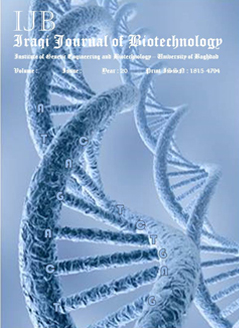Evaluation of sperm apoptosis in Iraqi severe oligozoospermic patients using annexin-V by flow cytometry
Abstract
The present study was conducted in the institute of genetic engineering and biotechnology – university of Baghdad during a period from 15 September 2015 to 10 February 2016. The aim of this study was to detect the apoptotic alterations in sperm of Iraqi patients with severe oligozoospermia depending on annexin V- binding using flow cytometry and study its relationship with some semen parameters. Semen samples were taken from severe oligozoospermic (SOS) patients (n=75) and apparently healthy (AH) subjects (fertile, n=25) by masturbation following 3-7 days of sexual abstinences in Baghdad specialist fertility Centre. Semen samples were evaluated according to the WHO criteria which include volume, count and the percentages of motility, active, normal and abnormal sperm. Sperm apoptosis was determined using annexin V-FITC kit (Aviscera Bioscience, USA) by flow cytometry. The percentages of live sperms were significantly (p≤0.01) higher in AH subjects than in SOS patients. The percentages of early and late apoptotic sperms were significantly (p≤0.01) lower in AH subjects than in SOS patients. Apoptotic index values were significantly (p˂0.01) lower in AH subjects than in SOS patients. Semen volume significantly (p˂0.01) correlated with the percentage of viable sperm (r = 0.76) and inversely correlated (p˂0.01) with the percentages of early and late apoptosis and apoptotic index. Sperm count was inversely correlated (p˂0.01) with the percentages of early and late apoptosis and apoptotic index. sperm motility percentages were inversely correlated (p˂0.01) with the percentages of early and late apoptosis and apoptotic index. The percentages of both active and normal sperm were inversely correlated (p˂0.01) with the percentages of early, late apoptotic and apoptotic index. In conclusion, our results showed that the percentages of apoptotic and necrotic spermatozoa detected by flow cytometry may be used as biomarkers for the detection of fertility.


